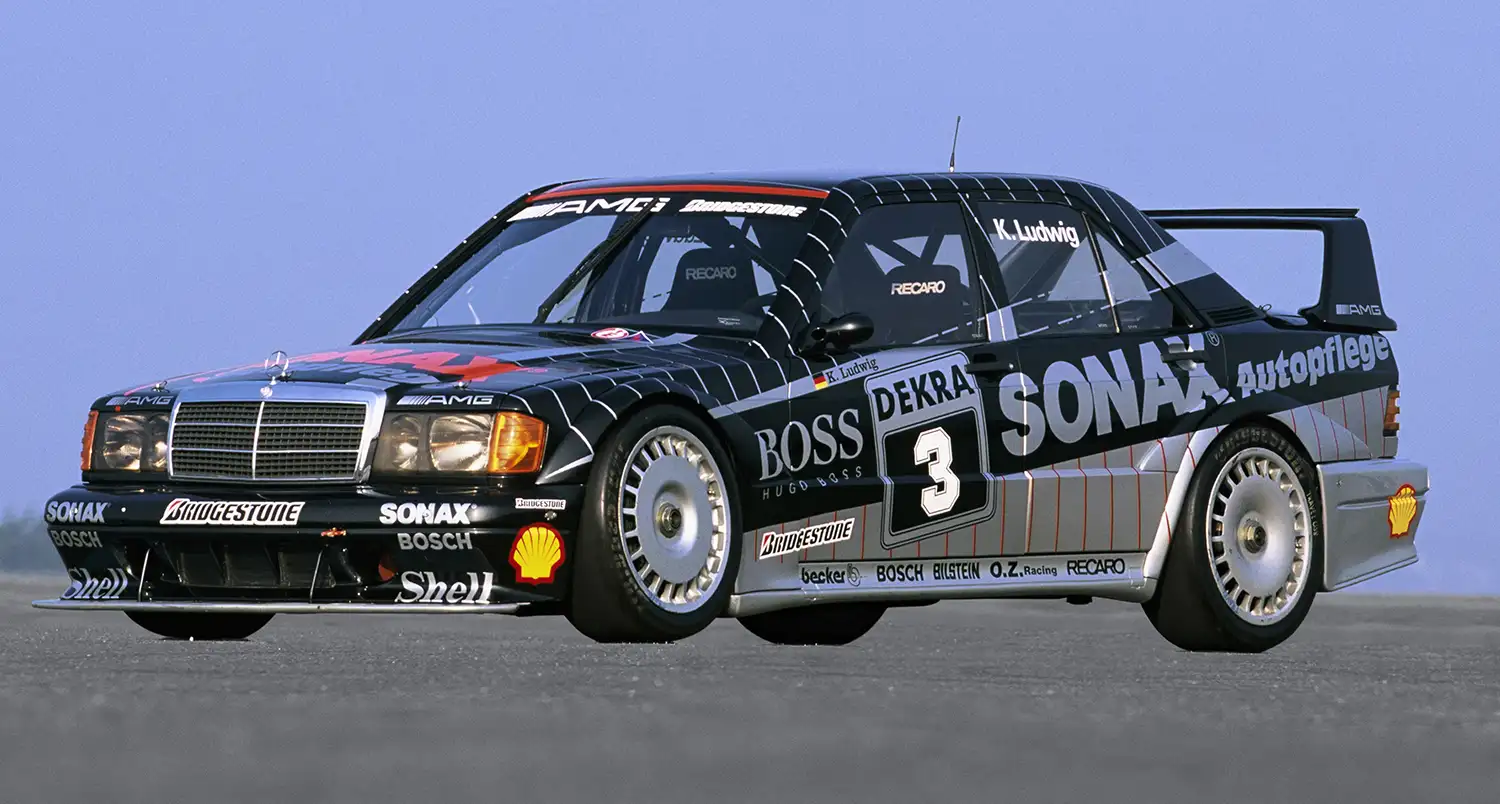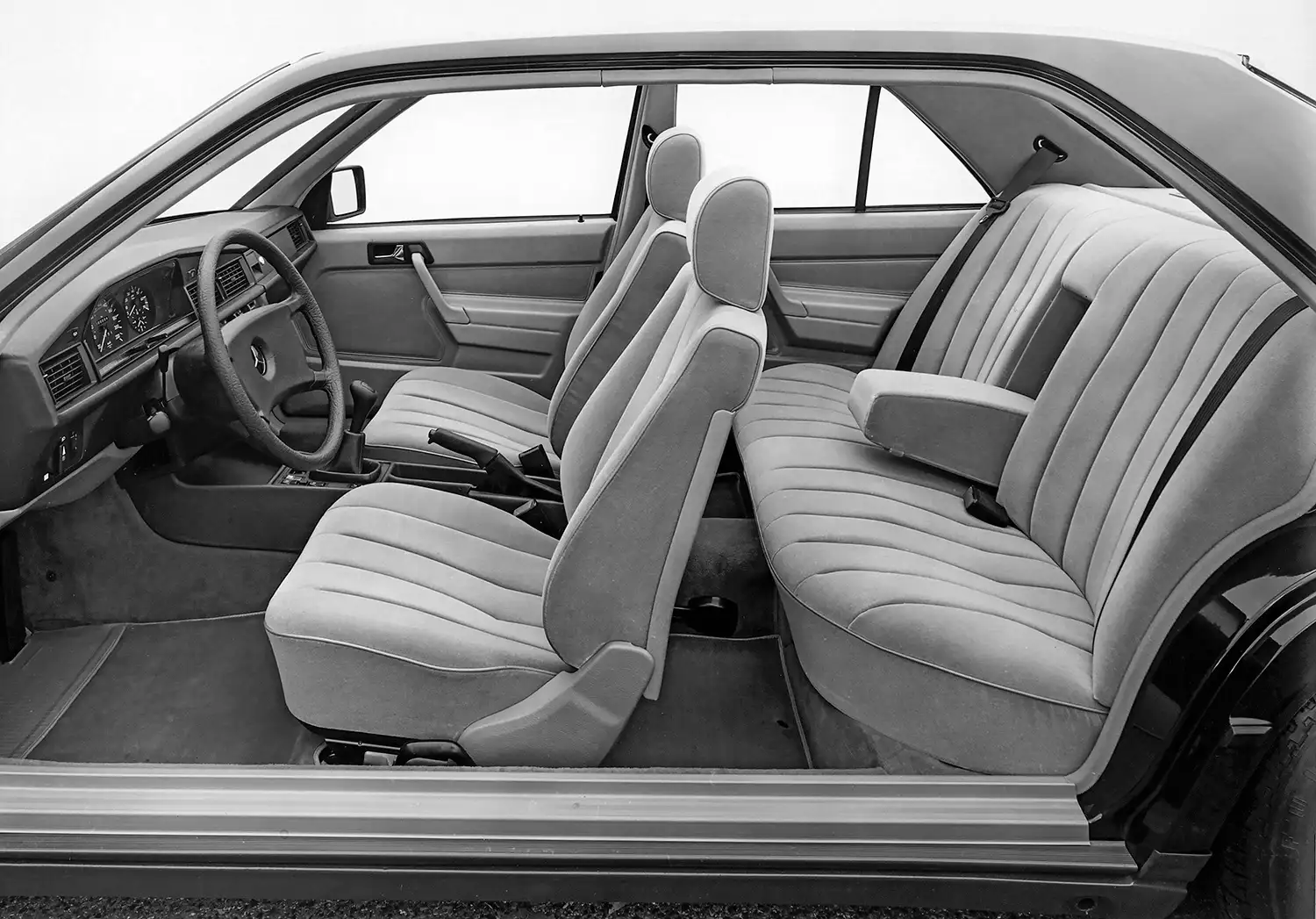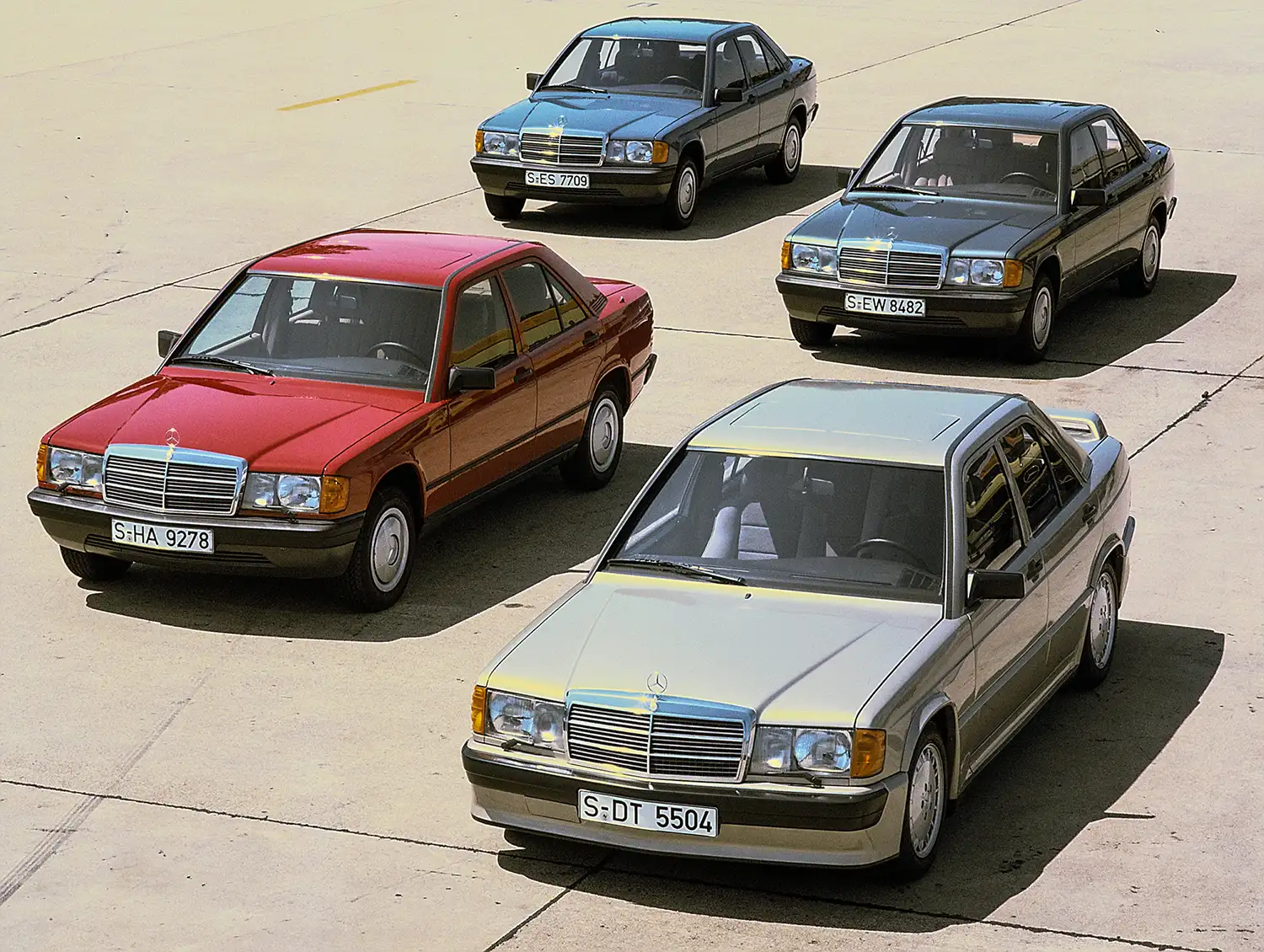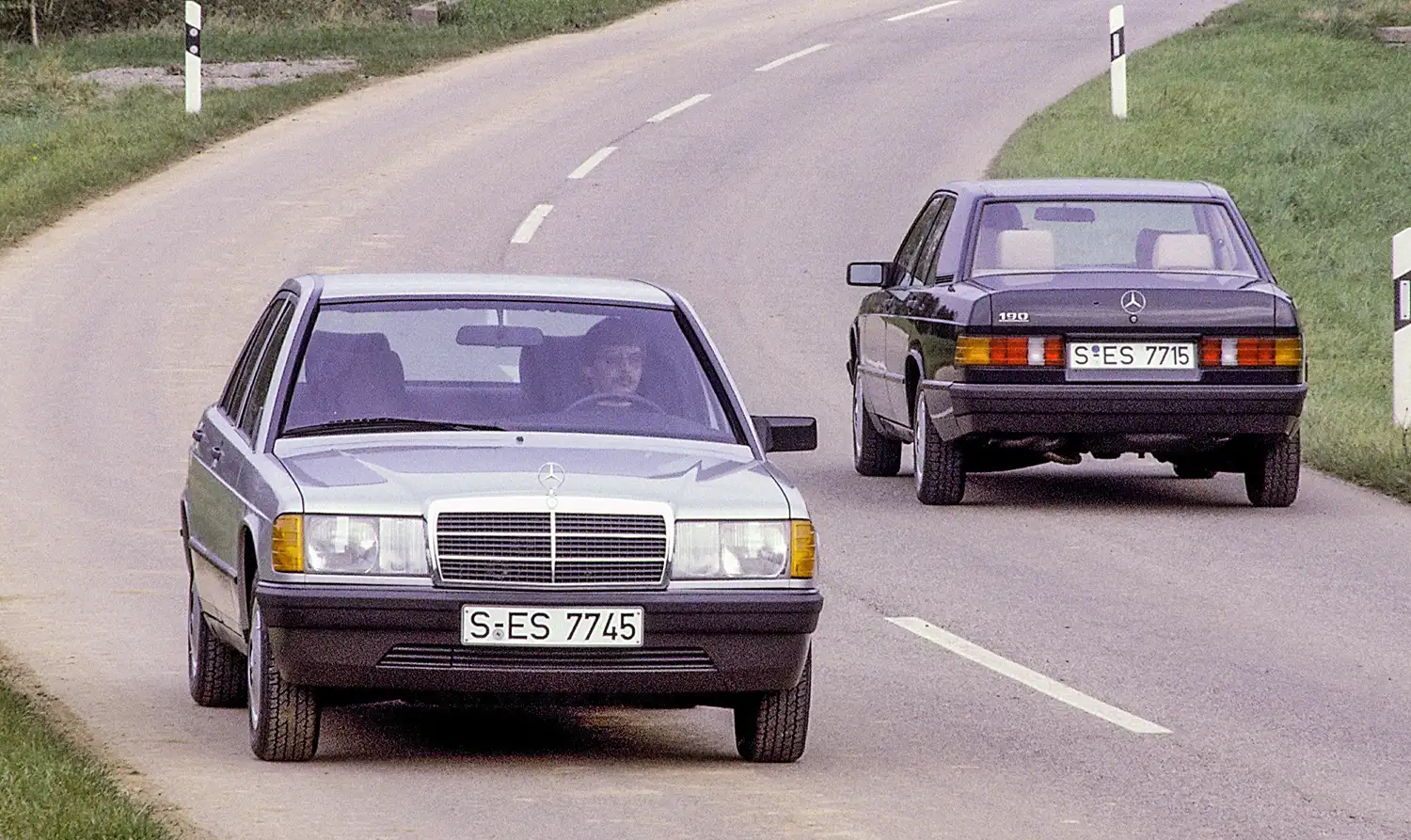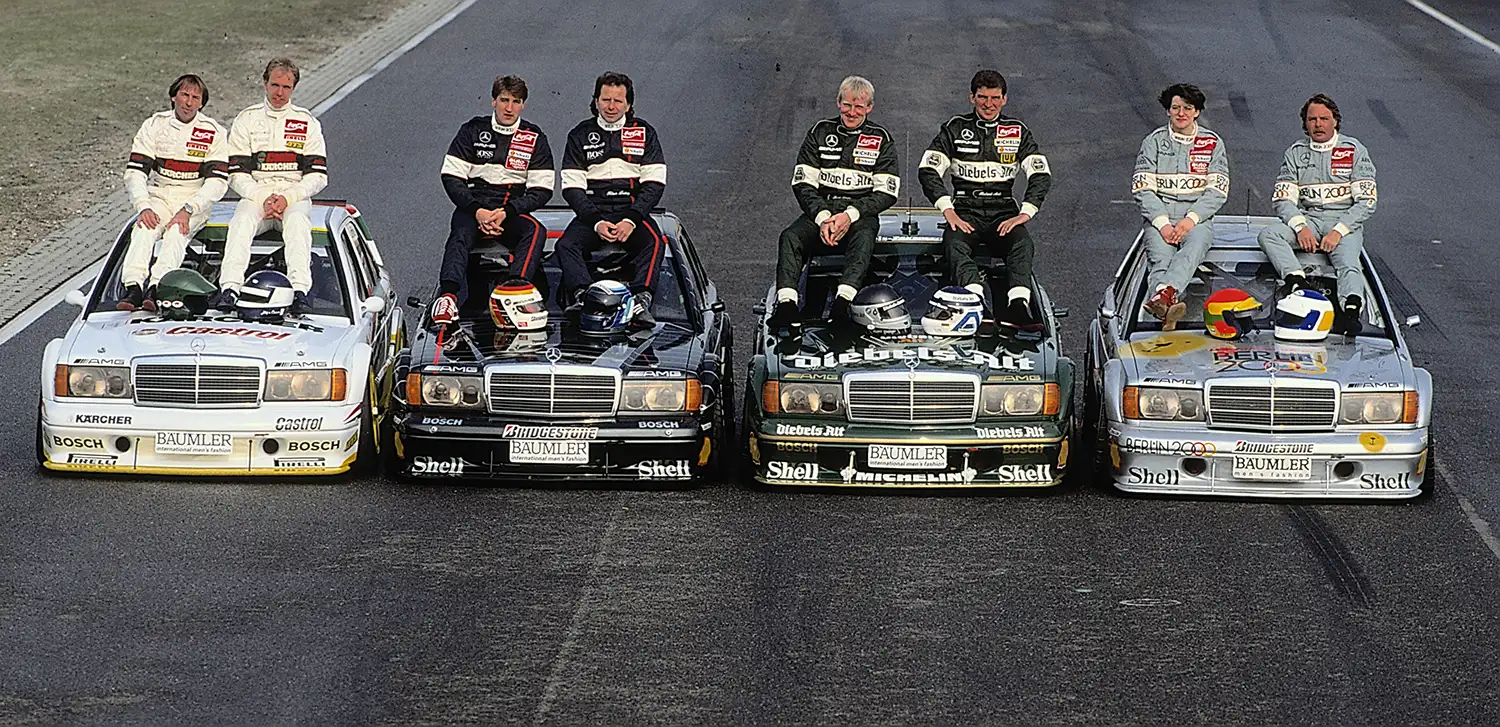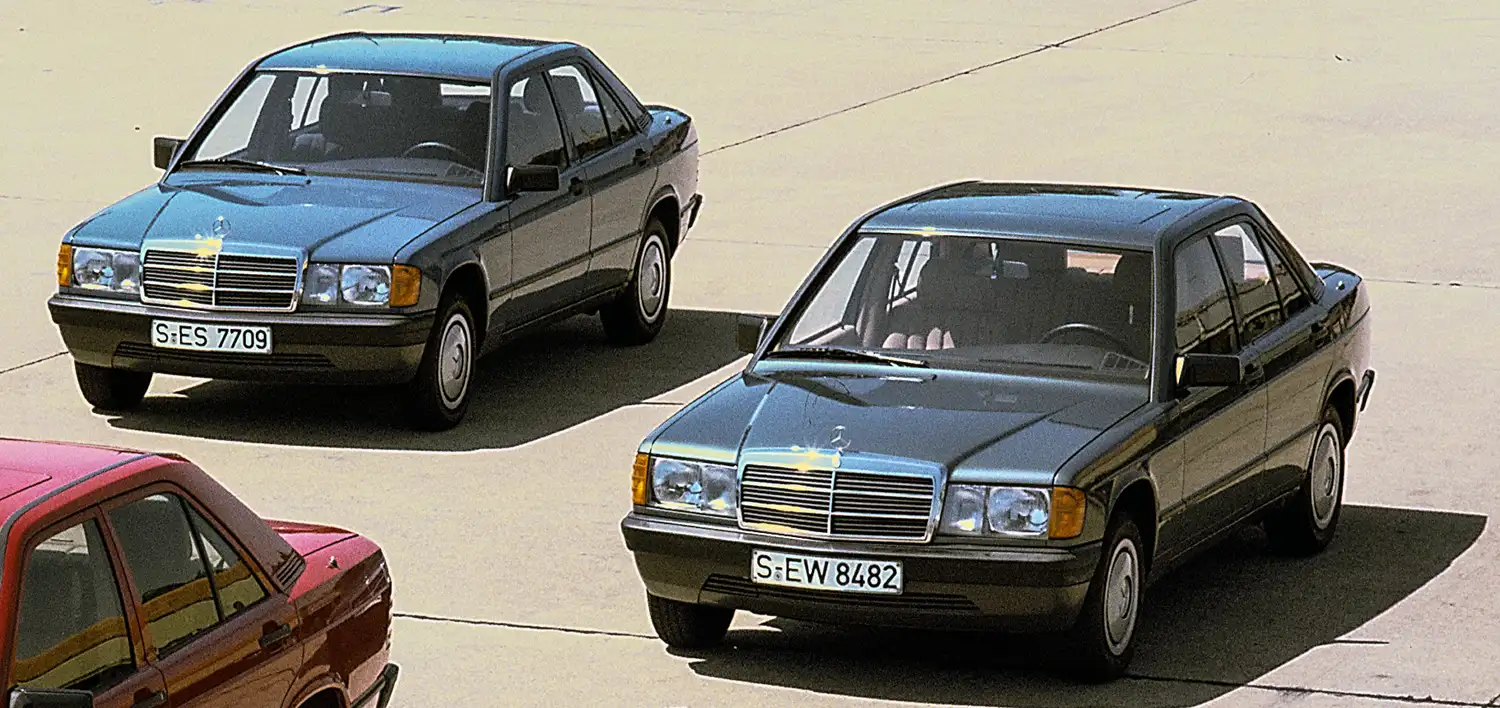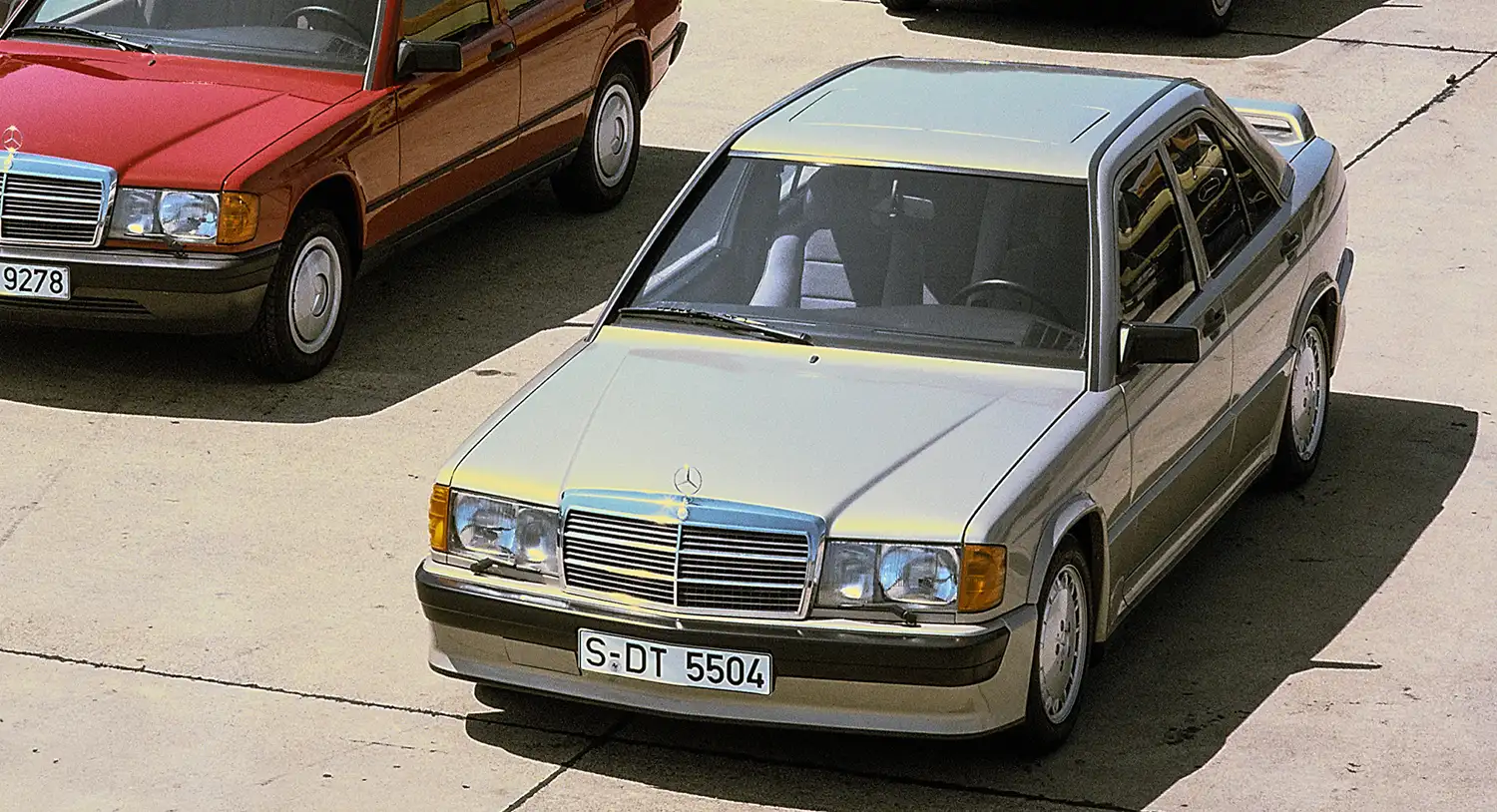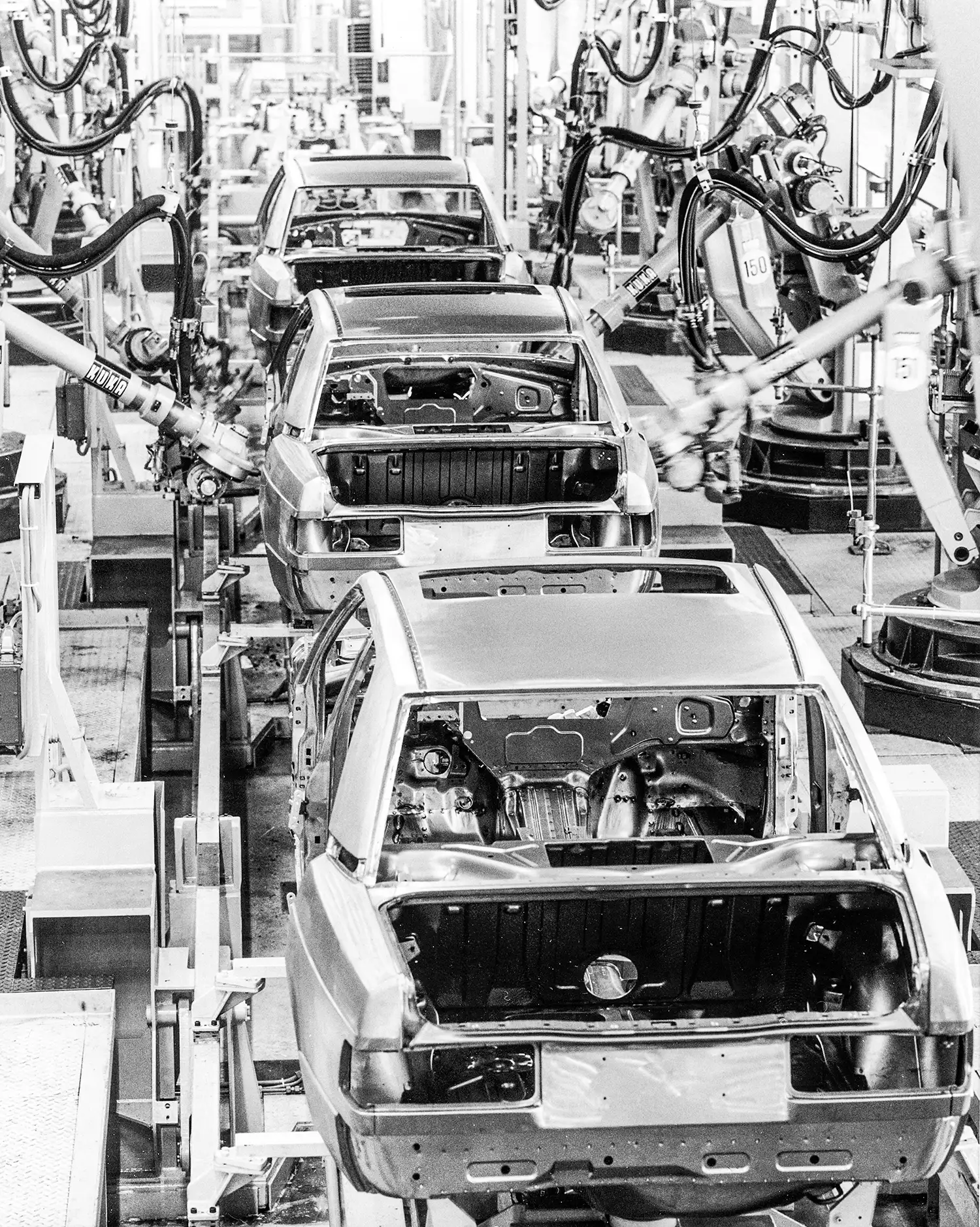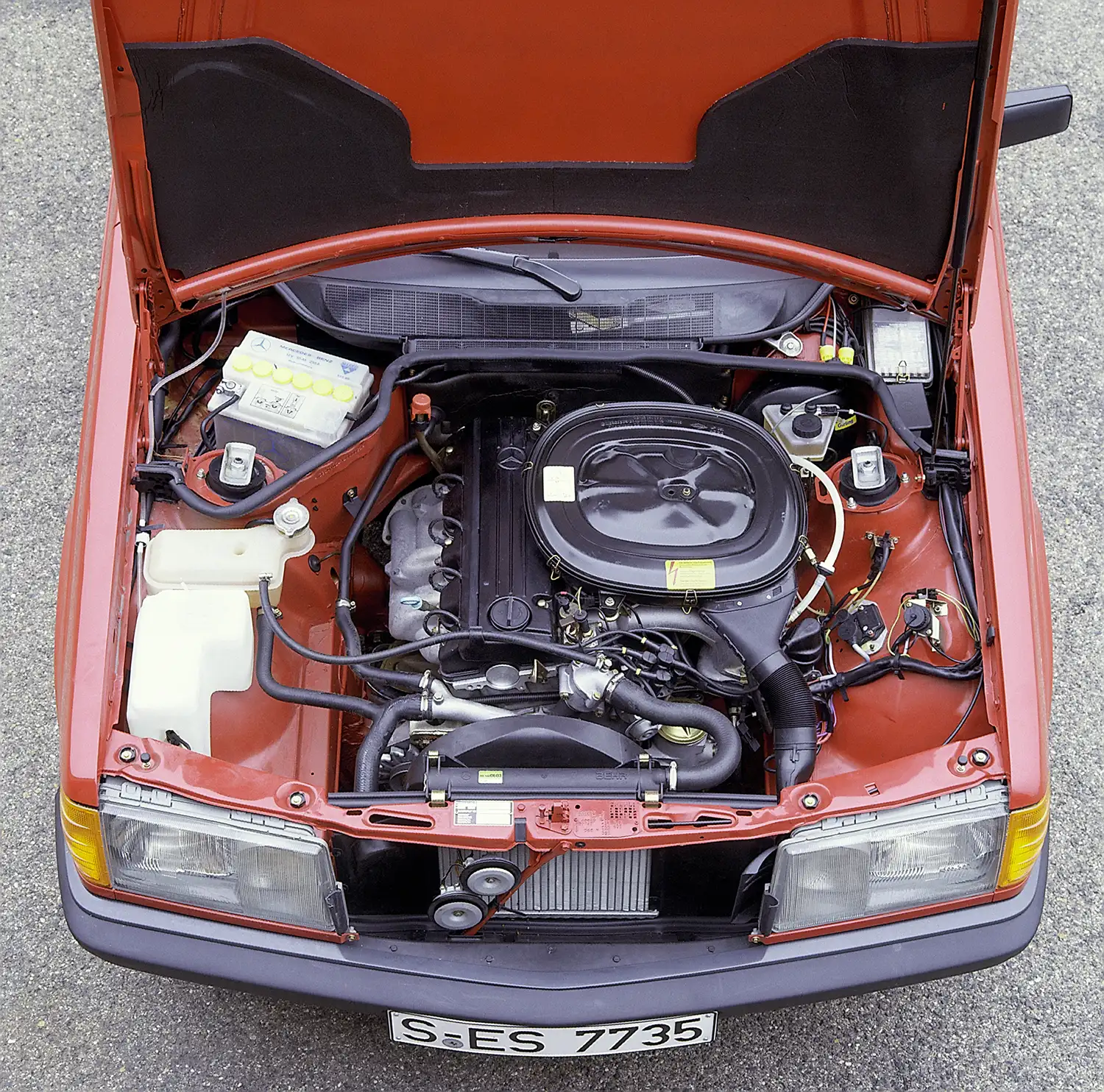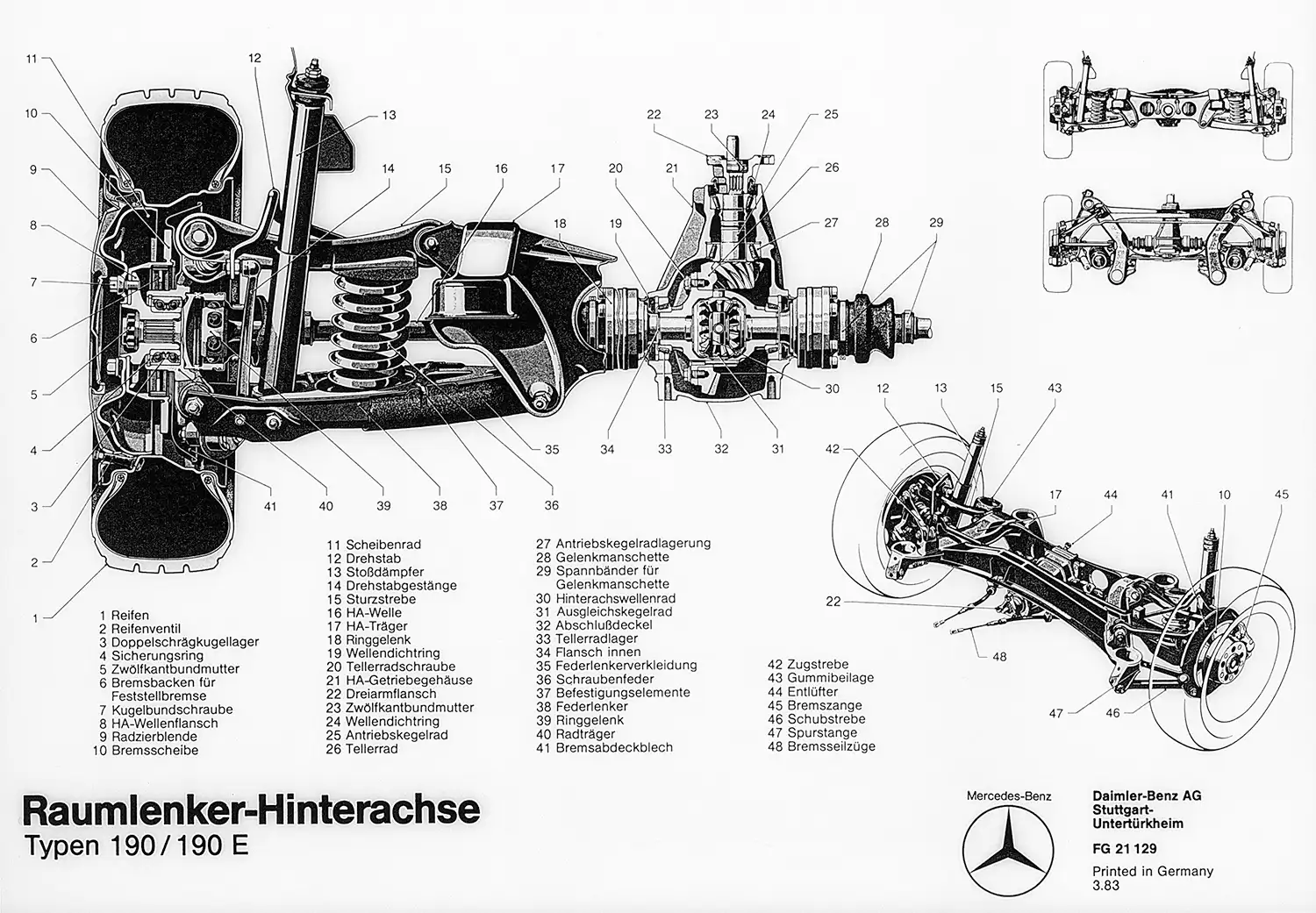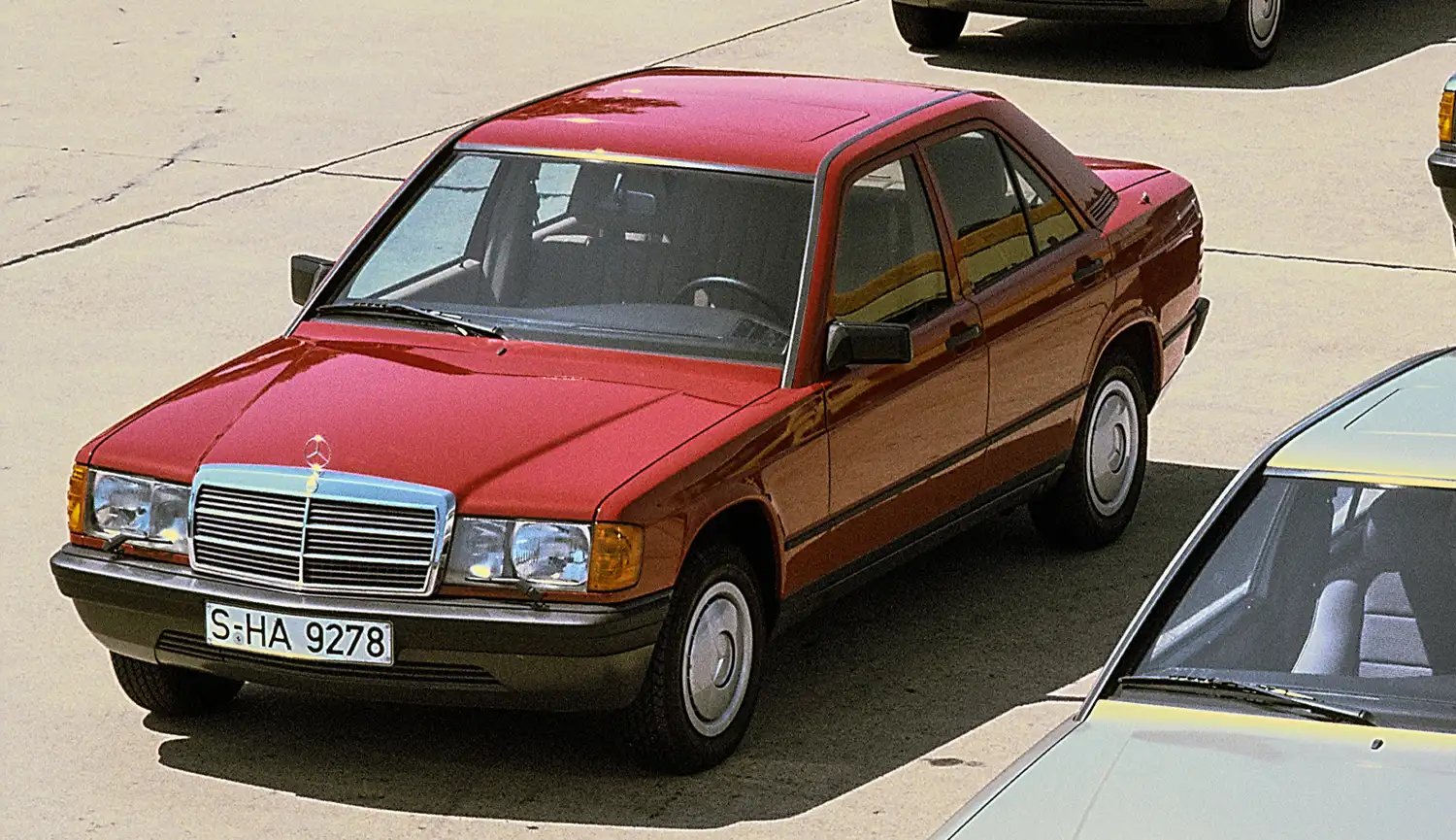
In December 1982, Mercedes-Benz made a bold move by expanding its model range with the introduction of the 190 and 190 E models, part of the 201 series. Designed to be chic, safe, and sporty, these new compact sedans were positioned below the brand’s upper mid-size and full-size classes. With this launch, Mercedes-Benz set new standards in the compact sedan market, creating a model that remains relevant and admired even decades later.
A Modern Classic
The design of the Mercedes-Benz 190 series, also known as the “Baby-Benz,” continues to look modern despite its age, and the technology behind it still holds up remarkably well. The car was intended to be an entry-level model for the brand, yet it quickly became a favorite for its blend of comfort, reliability, and timeless style.
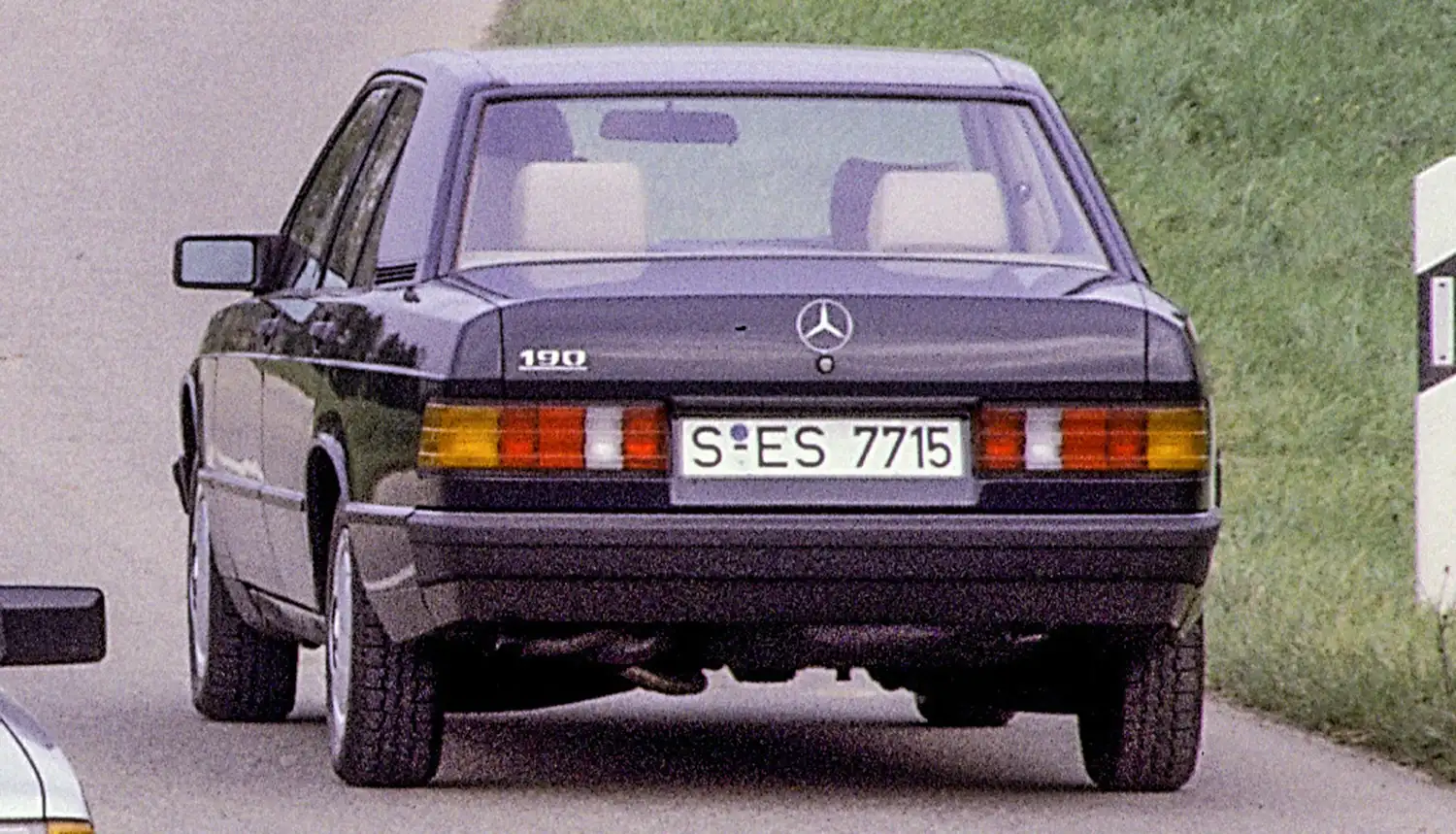
Starting with two petrol engines, the model range soon expanded, with a diesel variant, the 190 D, appearing in 1983. The sporty 190 E 2.3-16, known for its success in both sales and motorsport, particularly in the German Touring Car Championship (DTM), also made its debut in 1984.
Engineering Excellence
The 190 and 190 E were equipped with the four-cylinder M 102 engine, a 1,997 cc powerplant that had already proven its reliability in the Mercedes-Benz 200 of the 123 series. The decision to use the number 190 for these models was part of Mercedes-Benz’s strategy to clearly position its new compact class. The compact sedan was smaller, lighter, and more economical than the mid-range 123 series, with dimensions that included a total length of 4,420 millimeters, a width of 1,678 millimeters, and a of 1,383 millimeters. Despite the reduction in size, the 190 series did not compromise on Mercedes-Benz’s core values of driving culture, safety, and quality.
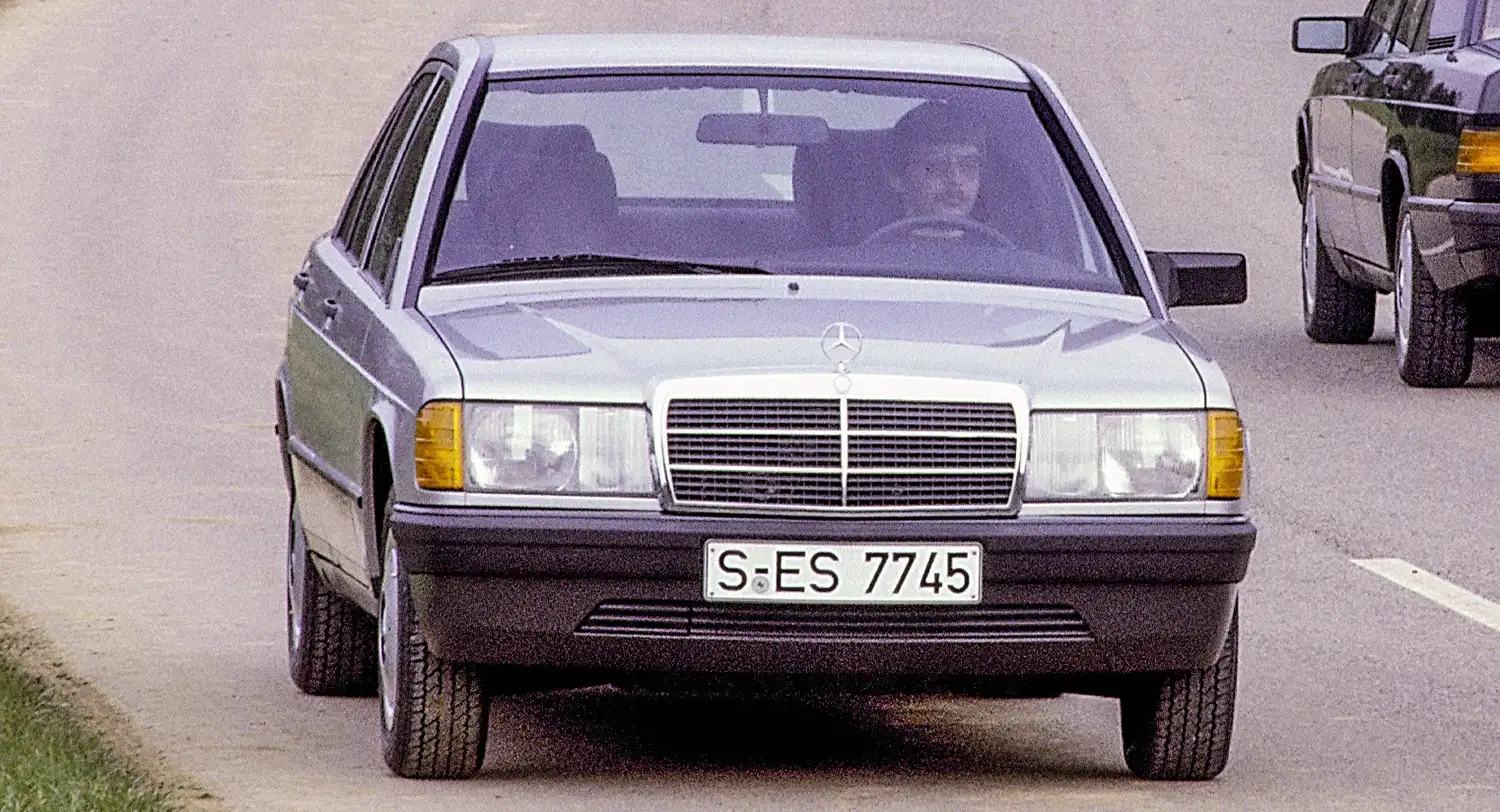
Cutting-Edge Production
The W 201 series went into production in Sindelfingen before the Mercedes-Benz plant in Bremen took over as the primary manufacturing site. The Bremen plant, built specifically for the 201 series, was considered the most modern vehicle production facility in the world at the time. Significant investments were made, with Daimler-Benz AG pouring around DM 1.4 billion into the new plant, marking the largest single investment in the company’s history up to that point. The success of the compact class led to continuous expansion of production capacities and workforce at the Bremen plant, with around 1 million 190s built by the time production ceased in August 1993.
Safety and Aerodynamics
The 201 series boasted excellent aerodynamics, with a drag coefficient of just 0.34, the best among Mercedes-Benz sedans at the time of its launch. This achievement was critical, particularly for the U.S. market, where the Clean Air Act required manufacturers to meet strict fuel consumption standards. The 190 series also set new benchmarks in safety, featuring a body structure that became a model for future Mercedes-Benz vehicles. The use of high-strength sheet metal and innovative engineering ensured both active and passive safety for occupants.
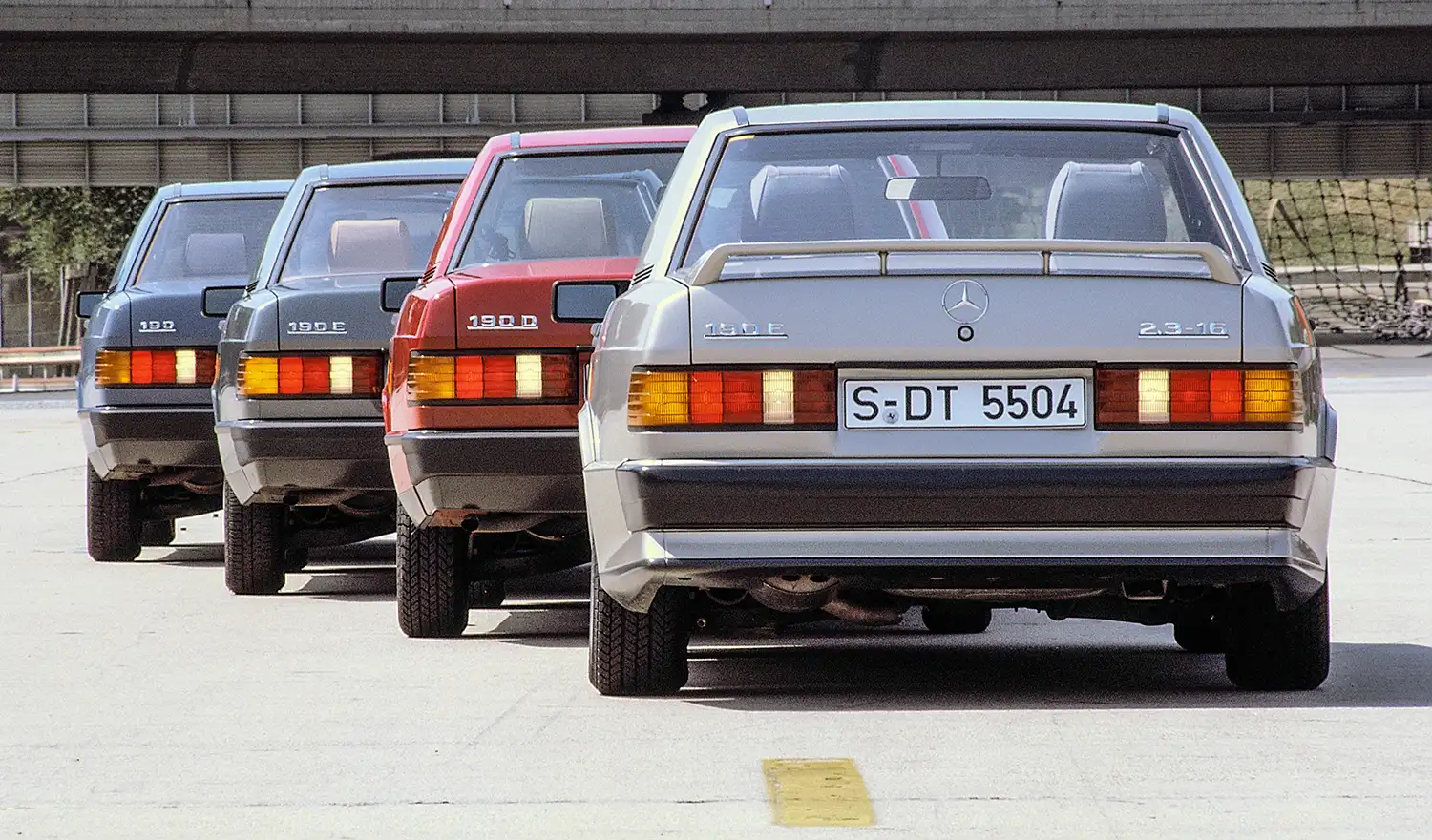
Timeless Design and Motorsport Success
Under the guidance of chief designer Bruno Sacco and designer Peter Pfeiffer, the 201 series featured a design that was distinctively Mercedes-Benz yet unique to the compact class. The clear, functional lines of the 190 series have aged gracefully, with the vehicle still looking at home on modern roads. This timeless design, combined with the car’s reputation for durability, has led to a steady increase in value for well-maintained examples.
The 190 series also made a name for itself in motorsport, particularly with the 190 E 2.3-16, which set three long-distance driving world records in 1983. The model found success in the German Touring Car Championship (DTM), with notable victories and titles, especially with the Evolution models developed by AMG. The 190 E 2.5-16 Evolution II became a dominant force in the early 1990s, securing top positions in DTM races and solidifying the 190 series’ legacy in motorsport.
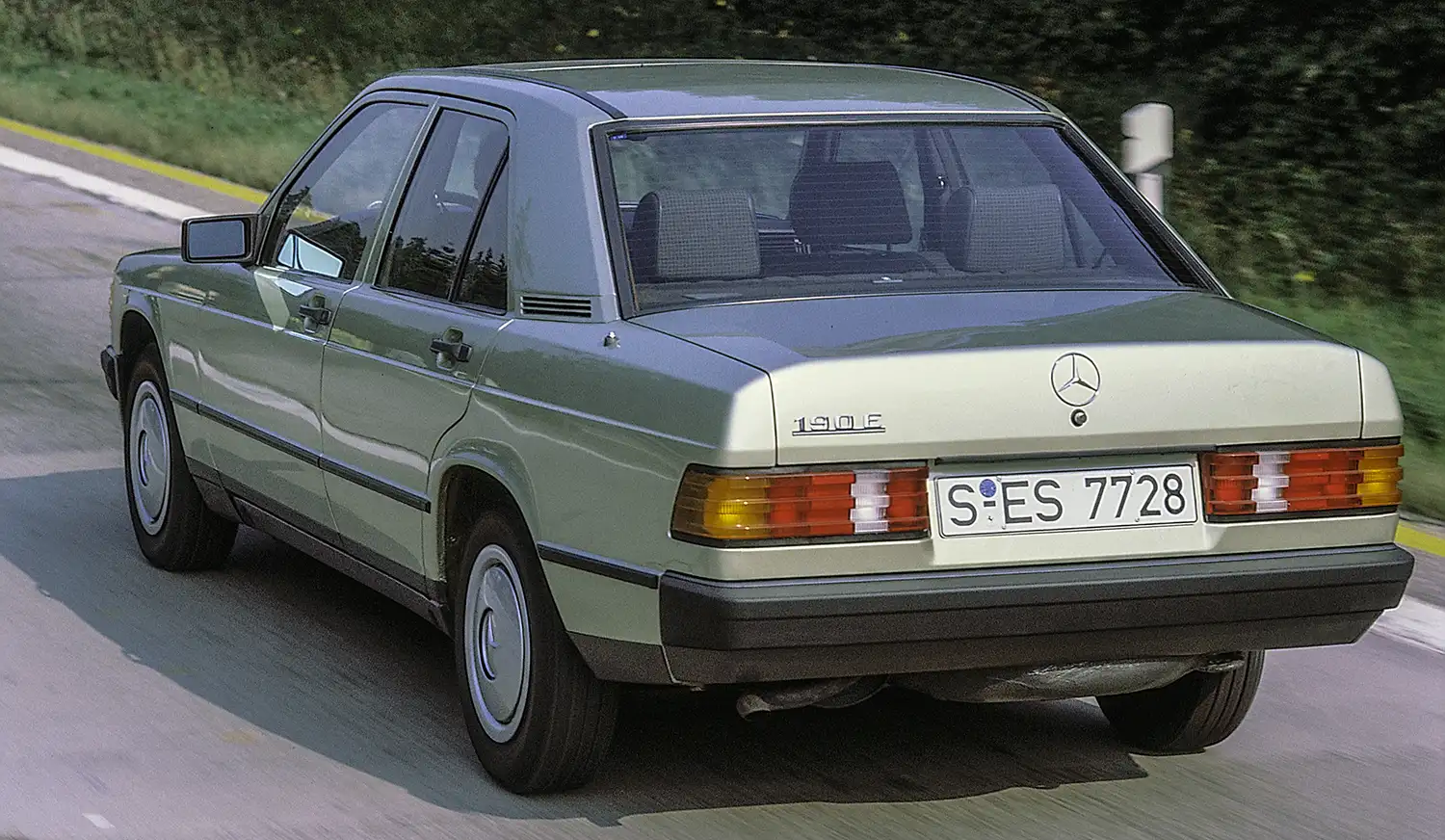
Legacy of the Baby-Benz
The Mercedes-Benz 190 series, affectionately known as the “Baby-Benz,” was a groundbreaking model that expanded the brand’s appeal to a broader audience. It combined luxury, performance, and safety in a compact package, setting new standards for the industry. The success of the 190 series paved the way for the future C-Class models, with the current C-Class of the 206 series continuing the legacy. Today, the “Baby-Benz” remains a beloved classic, cherished by enthusiasts for its timeless design, engineering excellence, and motorsport heritage.
Source: Mercedes-Benz
This Article use tools from Chatgpt
